
On 30 Mar 1858, the first U.S. patent for a combination lead pencil and eraser was issued to Hyman L. Lipman. Opposite the writing end, one fourth of the top end had a piece of india-rubber inside which could be increasingly exposed by sharpening that end. Today's book pick is: The Pencil: A History of Design and Circumstance, by Henry Petroski who traces the long and complex history of the pencil back to ancient times. Petroski combines a talent for fine writing with a deep knowledge of engineering and technological history, examines the story of the pencil, considering it not only as a thing in itself, but also as an exemplar of all things that are designed and manufactured. Thus, he shows what the pencil can teach us about engineering and technology today. Petroski ranges widely in time, discussing the writing technologies of antiquity. But his story really begins in the early modern period, when, in 1565, a Swiss naturalist first described the properties of the mineral that became known as graphite.
Petroski traces the evolution of the pencil through the Industrial Revolution, when machine manufacture replaced earlier handwork. Along the way, he looks at some of pencil making's great innovators—including Henry David Thoreau, the famed writer, who worked in his father's pencil factory, inventing techniques for grinding graphite and experimenting with blends of lead, clay, and other ingredients to yield pencils of varying hardness and darkness. Petroski closes with a look at how pencils are made today—a still-imperfect technology that may yet evolve with new advances in materials and design.
Henry Petroski is one of the webmaster's favorite authors because he weaves delightful stories around otherwise this seemingly unremarkable object.
It is available from Amazon, typically about New from $7.82. Used from $1.99. (As of earlier time of writing - subject to change.)
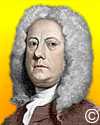 | All sorts of dung and compost contain some matter which, when mixed with the soil, ferments therein; and by such ferment dissolves, crumbles, and divides the earth very much. This is the chief and almost only use of dung. … This proves, that its (manure) use is not to nourish, but to dissolve, i.e., divide the terrestrial matter, which affords nourishment to the Mouths of vegetable roots. His underestimate of the value of manure. |
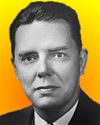 | These hormones still belong to the physiologist and to the clinical investigator as much as, if not more than, to the practicing physician. But as Professor Starling said many years ago, 'The physiology of today is the medicine of tomorrow'. |
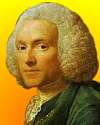 | Anatomists have ever been engaged in contention. And indeed, if a man has not such a degree of enthusiasm, and love of the art, as will make him impatient of unreasonable opposition and of encroachments upon his discoveries and his reputation, he will hardly become considerable in Anatomy or in any branch of natural knowledge. |
| Before you look at today's web page, see if you can answer some of these questions about the events that happened on this day. Some of the names are very familiar. Others will likely stump you. Tickle your curiosity with these questions, then check your answers on today's web page. | |
| Births | |
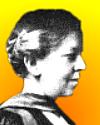 | Mary Whiton Calkins, born 30 Mar 1863, was an educator and psychologist. she was the first American woman to attain distinction in these fields of study. Calkins studied psychology at Harvard as a "guest." She established the first psychology laboratory at a women's college (Wellesley). She developed the paired-associate procedure for studying verbal memories. One of her main findings was that repeated pairings of words increased memory. Why did she pursue her studies at Harvard only as a “guest?” |
| Deaths | |
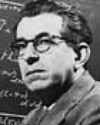 | A German-American physicist (1900-1954) devised the first quantum mechanical treatment of the hydrogen molecule (with Walter Heitler). Certain forces, named after this physicist, are weak intermolecular forces that arise from the attractive force between otherwise nonpolar molecules. (They are also sometimes called Van der Waals forces after a Dutch scientist.) Can you name the German-American physicist? |
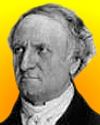 | Antoine-Jérôme Balard (1802-1876) was a French chemist who in 1826 discovered an element, determined its properties, and studied some of its compounds. Later he proved its presence in sea plants and animals. This discovery was a by-product of a more general chemical investigation of the sea and its life forms. Which element did Balard discover? |
| Events | |
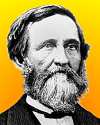 | On 30 Mar 1842, physician Dr. Crawford W. Long of Jefferson, Georgia, first used a certain anesthetic during a minor operation (the removed a tumour from a patient's neck. This event predated Morton's public demonstration of the same anesthetic by four years, but was not disclosed until 1849 - several years after Morton's widely publicized feat. Morton was long given credit for the accomplishment, but Long is now widely considered to have made the discovery of surgical anesthesia. What chemical compound did Long and Morton use as an anesthetic? |
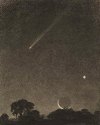 | The date 30 Mar in 239 B.C., is the first recorded perihelion passage of a certain comet, made by Chinese astronomers. The comet's highly elliptical, 75-year orbit carries it out well beyond the orbit of Neptune and well inside the orbits of Earth and Venus when it swings in around the Sun, travelling in the opposite direction from the revolution of the planets. It was the first comet that was recognized as being periodic, by an Englishman astronomer, who predicted years in which it would reappe What is the name of this comet? |
Fast answers for the previous newsletter for March 29: food chain • Pennsylvania (Titusville) • Ruth Sager • Coca-Cola.
 If you enjoy this newsletter, the website, or wish to offer encouragement or ideas, please send feedback by using your mail reader Reply button.
If you enjoy this newsletter, the website, or wish to offer encouragement or ideas, please send feedback by using your mail reader Reply button. Your click on a Facebook, StumbleUpon, or other social button on the site webpages is also a welcome sign of appreciation. Thank you for using them.
© This newsletter is copyright 2020 by todayinsci.com. Please respect the Webmaster's wishes and do not put copies online of the Newsletter — or any Today in Science History webpage. (If you already have done so, please remove them. Thank you.) Offline use in education is encouraged such as a printout on a bulletin board, or projected for classroom viewing. Online, descriptive links to our pages are welcomed, as these will provide a reader with the most recent revisions, additions and/or corrections of a webpage. For any other copyright questions, please contact the Webmaster by using your mail reader Reply button.
--
If you do not want to receive any more newsletters, Unsubscribe
To update your preferences and to unsubscribe visit this link
Executive Real Estate Business Class
-
"It was like a man with wings. It wasn't like anything you'd see on TV or in a monster movie." ...
About the publisher
Search This Blog
Blog Archive
-
▼
2021
(585)
-
▼
March
(44)
- Newsletter for Wednesday 31 March.
- On This Day for March 30 - Failed assassination at...
- Newsletter for Tuesday 30 March.
- On This Day for March 29 - Dominion of Canada crea...
- Newsletter for Monday 29 March.
- The real history behind new film 'Ammonite', starr...
- On This Day for March 28 - Constantinople renamed ...
- Newsletter for Sunday 28 March.
- On This Day for March 27 - Cleopatra reinstated as...
- Newsletter for Saturday 27 March.
- Catch a break with spring savings
- On This Day for March 26 - Signing of Israel-Egypt...
- Newsletter for Friday 26 March.
- On This Day for March 25 - Robert the Bruce crowne...
- On This Day for March 24 - Exxon Valdez Alaskan oi...
- Newsletter for Wednesday 24 March.
- On This Day for March 23 - Lewis and Clark's retur...
- Newsletter for Tuesday 23 March.
- On This Day for March 22 - Murder at Jamestown, Ya...
- Newsletter for Monday 22 March.
- Roman medicine: 6 ways people stayed healthy
- On This Day for March 21 - Closing of Alcatraz pri...
- Newsletter for Sunday 21 March.
- On This Day for March 20 - AUM subway attack, Maud...
- Newsletter for Saturday 20 March.
- On This Day for March 19 - Iraq War begins, Glenn ...
- Newsletter for Friday 19 March.
- On This Day for March 18 - Election of Chen Shui-b...
- On This Day for March 17 - Vote to end apartheid, ...
- On This Day for March 16 - My Lai Massacre, Caroli...
- On This Day for March 15 - Julius Caesar assassina...
- On This Day for March 14 - Reelection of Vladimir ...
- Newsletter for Sunday 14 March.
- On This Day for March 13 - The planet Uranus disco...
- Newsletter for Saturday 13 March.
- Newsletter for Friday 12 March.
- Newsletter for Thursday 11 March.
- Newsletter for Wednesday 10 March.
- On This Day for March 9 - Battle of the Monitor an...
- Newsletter for Monday 8 March.
- Newsletter for Sunday 7 March.
- On This Day for March 6 - King Tut's tomb opened, ...
- On This Day for March 2 - Moroccan independence de...
- On This Day for March 1 - Establishment of Yellows...
-
▼
March
(44)
-
Blogroll
-
About
HistoryFact










0 comments:
Post a Comment